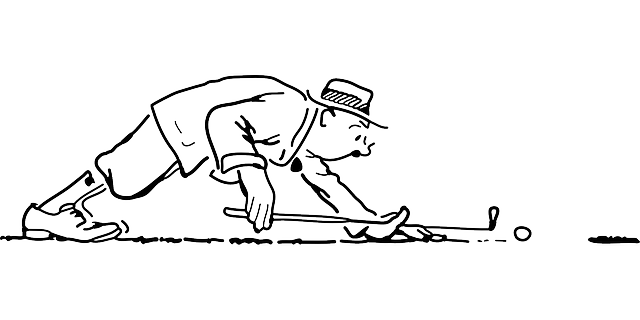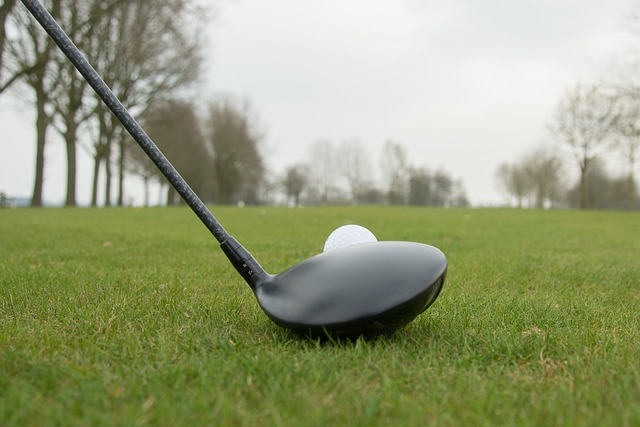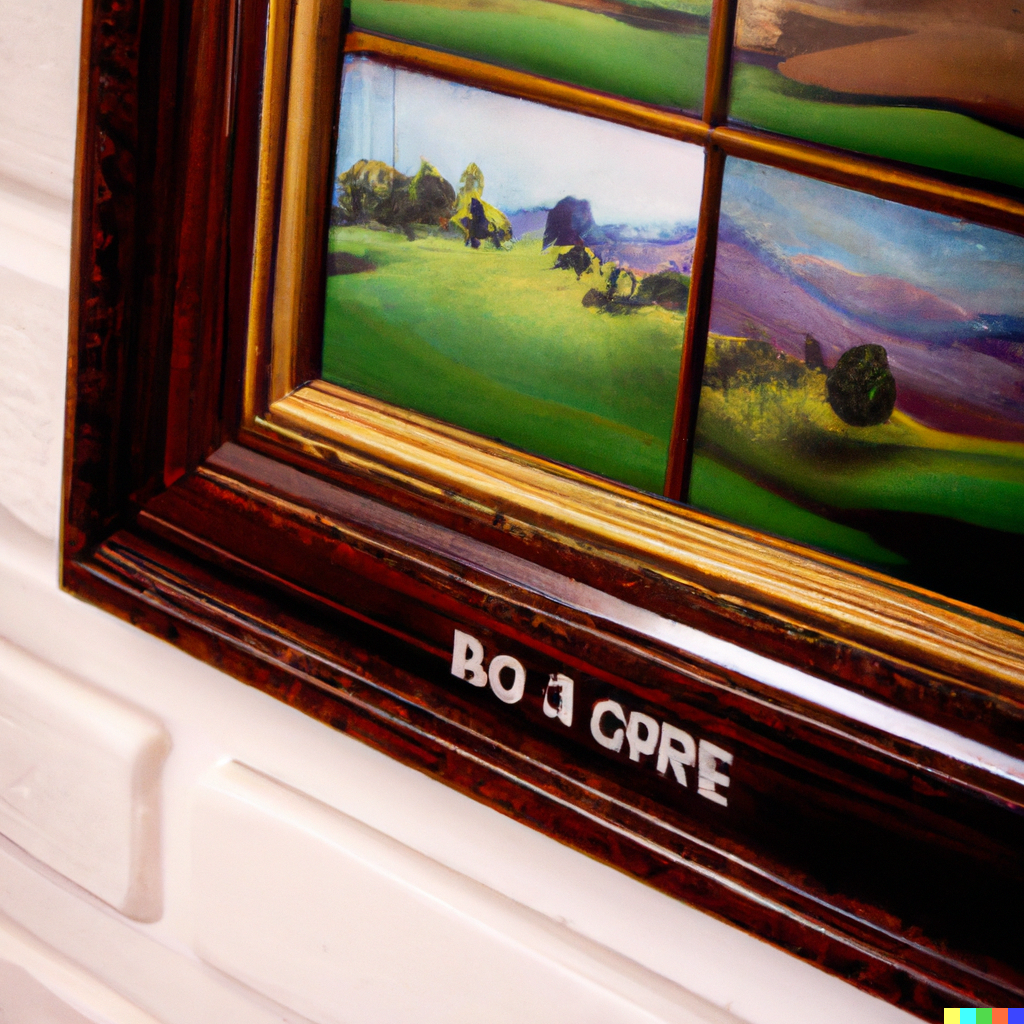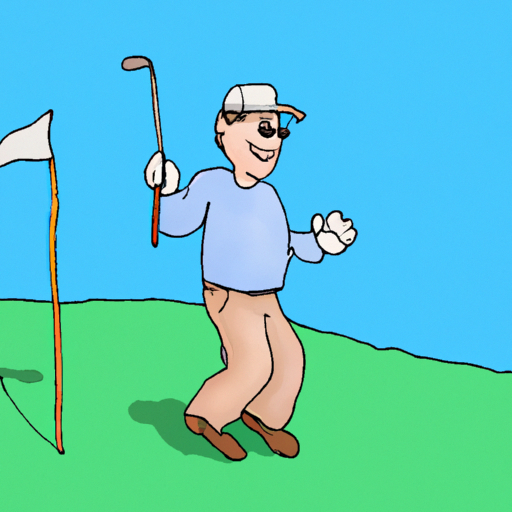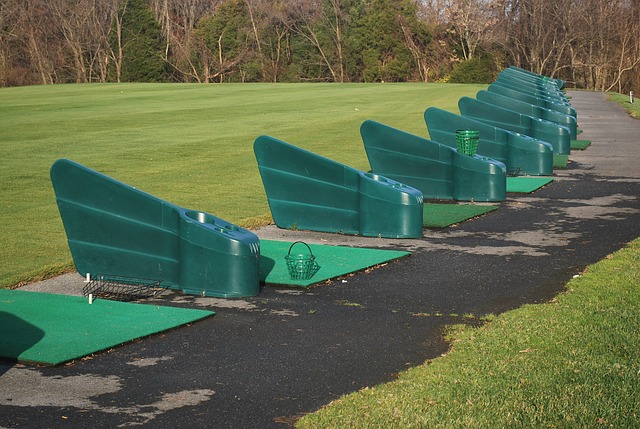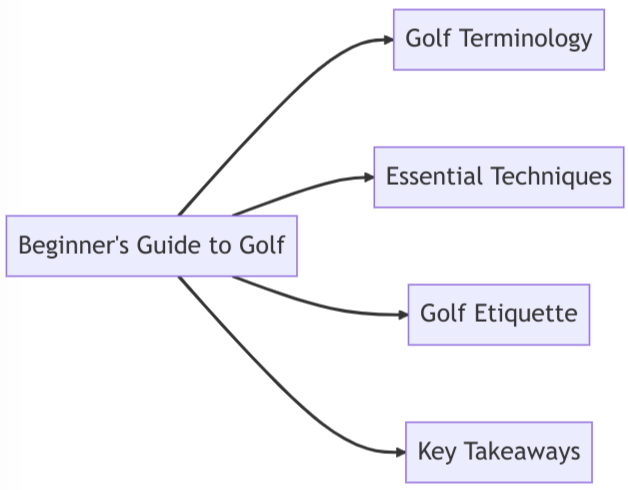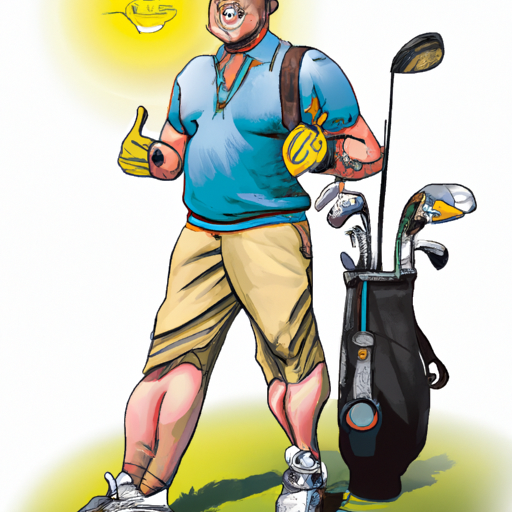What is a Mid Handicap Golfer?
Understanding what it means to be a mid handicap golfer is crucial for improving your game and lowering your scores. Whether you’re struggling with consistency or looking to refine your short game, this guide offers practical tips, equipment recommendations, and key takeaways to help you progress. Dive in to discover actionable insights and take your golfing skills to the next level. If you're in a hurry, check out the key takeaways and FAQ section at the bottom of the article for quick tips.
Welcome to the world of mid-handicap golfers! If you're reading this, chances are you're either a golfer or someone interested in understanding what it means to be a mid-handicap golfer. As a fellow golfer who has traversed the challenging yet rewarding journey from a high handicap to a mid handicap, I’m excited to share insights that will help you navigate this phase of your golfing journey.
A mid-handicap golfer typically has a handicap index ranging from 10 to 20, which means they usually score between 80 and 94 for 18 holes. This range is broad and captures a diverse group of golfers who are not beginners but are also far from being scratch players. Understanding this category is crucial because it often represents a pivotal stage in a golfer's development, where significant improvements and skill refinements occur.
In this guide, we’ll delve into the characteristics of mid-handicappers, offer practical tips for improvement, and explore the best equipment to help you lower your scores. Let’s tee off!
 A mid handicap golfer focusing intently on their swing, showcasing the dedication and skill required to improve.
A mid handicap golfer focusing intently on their swing, showcasing the dedication and skill required to improve.Understanding Mid Handicap Golfers: Tips For Success
For years, I struggled with my golf game. I was inconsistent, often embarrassed by my performance on the first tee. My scores fluctuated wildly, and I could never seem to break through the barriers holding me back. I tried everything from new clubs to different coaching methods, but nothing seemed to work.
Determined to improve, I embarked on a journey to understand what was really going wrong. I spent countless hours on the driving range and greens, analyzing every aspect of my game. I realized that being a mid-handicap golfer was not just about skill but also about the right strategy and mindset. Along the way, I encountered numerous challenges, from frustrating three-putts to wayward drives, but each obstacle taught me something valuable.
One day, I stumbled upon the concept of a mid-handicap golfer. Understanding this category and its unique challenges was a revelation. I discovered that with the right approach and equipment, significant improvements were possible. This was my new opportunity—to transform my game by focusing on what truly mattered for a mid-handicapper.
I developed a framework based on key principles: using the right equipment tailored to my skill level, consistent practice with a focus on the short game, smart course management, and a positive mental attitude. I also started learning from better players and analyzing my game meticulously. This holistic approach was designed to address the specific needs of a mid-handicap golfer.
The results were transformative. My scores began to drop consistently, and my confidence soared. I was no longer the inconsistent golfer embarrassed on the first tee. Instead, I became a competitive player who could hold his own against more experienced golfers. This journey taught me that with the right mindset and strategy, any mid-handicap golfer could achieve significant improvements and truly enjoy the game.
By sharing my story and the insights I've gained, I hope to help other mid-handicap golfers transform their game and experience the same sense of achievement and satisfaction.
"The only way to improve your game is to keep playing." - Anonymous
Categories of Mid-Handicappers
Mid-handicappers are a varied group, and it's helpful to break them down into sub-categories to better understand their unique characteristics and needs. Here’s a closer look:
1. Lower Mid-Handicap (10-13 index)
- These golfers are on the cusp of becoming low-handicappers.
- They have a solid grasp of the fundamentals and can consistently hit fairways and greens in regulation.
- Common challenges include refining their short game and eliminating occasional mishits.
2. Mid Mid-Handicap (14-17 index)
- These players exhibit more variability in their game.
- They often struggle with consistency, especially in challenging conditions.
- Improvement areas include better distance control and increasing the percentage of greens hit in regulation.
3. Higher Mid-Handicap (18-20 index)
- These golfers are transitioning from a high to a mid handicap.
- They have a good understanding of the game but often face challenges with accuracy and short game performance.
- Focus areas include reducing three-putts and improving overall course management.
As a mid-handicap golfer myself, I remember the frustration of inconsistencies and the joy of hitting those rare, perfect shots. It's a journey of small but significant improvements, and understanding where you fall within these sub-categories can guide your practice and equipment choices.
Characteristics of Mid-Handicap Golfers
Now that we’ve defined what a mid-handicap golfer is, let’s dive into some common characteristics:
- Score Range: Typically scores between 80 and 94 for 18 holes.
- Mistake Patterns: Commonly make bogeys more than birdies or pars. Three-putts and missed fairways are frequent challenges.
- Strengths: Generally capable of hitting straight drives and have a fair understanding of course management.
- Weaknesses: Struggle with consistency, especially in the short game and putting.
For instance, I remember a round where I hit most fairways but couldn’t capitalize on my position because of poor putting. This inconsistency is typical of mid-handicappers and highlights the need for a balanced approach to improvement.
Next, we’ll move on to some practical tips that can help you enhance your game and move closer to becoming a low-handicap golfer.
Practical Tips for Improvement
Improving as a mid-handicap golfer involves a combination of refining your skills, optimizing your equipment, and enhancing your mental approach to the game. Here are some practical tips that can help you on your journey to becoming a low-handicap golfer.
1. Optimize Your Equipment
- Drivers: Use a driver with at least 10.5 degrees of loft to help keep the ball on the fairway. Mid-handicappers benefit from drivers that offer forgiveness and a higher launch.
- Irons: Stick to game improvement or cavity-back irons which offer more forgiveness. If you’re a lower mid-handicapper, you might start experimenting with players’ distance irons.
- Wedges: Opt for wedges with an optimized center of gravity to help with your short game, especially for shots within 50 yards.
- Putters: Higher mid-handicappers should consider mallet putters for their forgiving design, while lower mid-handicappers can explore peripheral weighted putters for better control.
- Golf Balls: Choose golf balls designed for forgiveness rather than high spin. Balls like the Titleist Pro V1 might be tempting but can lead to more hooks and slices.
2. Practice Consistently
- Short Game Focus: Spend more time on your short game. Most strokes are lost around the greens, so practicing chipping, pitching, and putting can significantly lower your scores.
- Distance Control: Work on your distance control with each club. Use a launch monitor if possible to understand your average distances and improve consistency.
- Putting Drills: Practice lag putting to reduce three-putts. Aim to get your first putt within a three-foot circle around the hole to leave yourself with manageable second putts.
3. Course Management
- Play Smart: Focus on making strategic decisions on the course. Avoid risky shots that could lead to penalties. Play to your strengths and manage your weaknesses.
- Understand Your Misses: Identify where you tend to miss (left, right, short, long) and plan your shots accordingly. This can help you avoid trouble and keep your scores lower.
4. Mental Game
- Stay Positive: Golf is as much a mental game as it is a physical one. Stay positive even after bad shots and focus on the next shot rather than dwelling on mistakes.
- Visualization: Before each shot, visualize the desired outcome. This helps in creating a clear mental picture and can improve your confidence and execution.
5. Play with Better Players
- Learn from Others: Playing with golfers who are better than you can provide valuable insights into course management, shot selection, and overall game strategy. Observe their techniques and ask for tips.
6. Analyze Your Game
- Track Stats: Use a golf app to track your fairways hit, greens in regulation, putts per round, and other key stats. This data can highlight areas for improvement.
- Video Analysis: Recording your swing and analyzing it can help identify flaws. Consider getting lessons from a golf pro who can provide expert advice based on your swing.
For example, I once struggled with inconsistent iron shots. After investing in a set of cavity-back irons and dedicating time to practicing my swing on a launch monitor, I saw a noticeable improvement in my accuracy and consistency. It was a game-changer for me and significantly lowered my scores.
By focusing on these areas, you’ll be well on your way to reducing your handicap and becoming a more competitive golfer.
Best Equipment for Mid-Handicap Golfers
Selecting the right equipment can significantly impact your game, especially if you're a mid-handicap golfer. Using clubs and balls tailored to your skill level can help you achieve greater consistency and confidence on the course. Here's a guide to the best equipment for mid-handicap golfers.
1. Drivers
- Recommended Models:
- TaylorMade Stealth Plus+: Known for its great ball speed and distance. It offers forgiveness, helping mid-handicappers maintain accuracy off the tee.
- Cobra Golf LTDx Max: Provides excellent forgiveness and distance. It's designed to help reduce spin and improve accuracy.
- Key Features:
- Loft: Look for drivers with 10.5 degrees or more to help with launch and distance.
- Forgiveness: A larger sweet spot can help minimize the impact of mishits.
2. Irons
- Recommended Models:
- TaylorMade Golf P790: These irons offer a balance of distance, forgiveness, and feel, making them ideal for mid-handicappers.
- Callaway Rogue ST Max: Known for their forgiveness and consistency, these irons can help improve accuracy.
- Key Features:
- Cavity Back Design: Provides a larger sweet spot and more forgiveness.
- Game Improvement Irons: Focus on models that offer both distance and forgiveness.
3. Wedges
- Recommended Models:
- Cleveland CBX 2: Offers a forgiving design with a larger sweet spot, helping with consistency in short game shots.
- Titleist Vokey SM9: Known for its versatility and spin control, ideal for mid-handicappers looking to improve their short game.
- Key Features:
- Optimized Center of Gravity: Helps in getting under the ball for better loft and spin.
- Forgiveness: Look for wedges with wider soles and larger faces.
4. Putters
- Recommended Models:
- Odyssey Stroke Lab EXO: Offers a balanced feel and consistent roll, ideal for improving putting accuracy.
- TaylorMade Spider X: Known for its stability and forgiveness, helping to reduce three-putts.
- Key Features:
- Mallet Design: Provides more stability and forgiveness compared to blade putters.
- Alignment Aids: Helps in ensuring accurate putts.
5. Golf Balls
- Recommended Models:
- Titleist Tour Soft: Offers a balance of distance and feel, with a focus on forgiveness.
- Srixon Soft Feel: Known for its soft feel and consistent performance, ideal for mid-handicappers.
- Key Features:
- Low Spin: Helps reduce hooks and slices.
- Soft Feel: Provides better control around the greens.
6. Other Accessories
- Golf Gloves: Ensure a good grip and prevent slipping during swings.
- Rangefinders: Helps in accurately measuring distances, improving your course management.
Choosing the right equipment can make a significant difference in your performance on the course. For example, when I switched to a new driver, I noticed an immediate improvement in my driving accuracy and distance, which boosted my confidence and lowered my scores.
By investing in equipment that suits your skill level and addresses your weaknesses, you'll be better equipped to improve your game and reduce your handicap.
Final Thoughts
Being a mid-handicap golfer is a unique and rewarding journey. It's a stage where significant improvements are within reach, and with the right approach, you can steadily lower your scores and move closer to becoming a low-handicap golfer. Let’s recap the key points we've covered:
1. Understanding Mid-Handicap Golfers
- A mid-handicap golfer typically has a handicap index between 10 and 20, with scores ranging from 80 to 94 for 18 holes.
- Mid-handicappers are characterized by a mix of strengths and weaknesses, such as hitting straight drives but struggling with consistency around the greens.
2. Categories of Mid-Handicappers
- Lower Mid-Handicap (10-13 index): On the verge of becoming low-handicappers.
- Mid Mid-Handicap (14-17 index): Struggle with consistency and distance control.
- Higher Mid-Handicap (18-20 index): Transitioning from high to mid handicap, focusing on accuracy and short game performance.
3. Practical Tips for Improvement
- Optimize your equipment with forgiving drivers, game improvement irons, and appropriate wedges and putters.
- Practice consistently, focusing on your short game and distance control.
- Manage the course smartly, making strategic decisions and understanding your misses.
- Enhance your mental game by staying positive and visualizing successful shots.
- Play with better players to learn from their experience and improve your own game.
- Analyze your game by tracking stats and using video analysis for feedback.
4. Best Equipment for Mid-Handicap Golfers
- Drivers like the TaylorMade Stealth Plus+ and Cobra Golf LTDx Max for distance and forgiveness.
- Irons such as the TaylorMade Golf P790 and Callaway Rogue ST Max for consistency and feel.
- Wedges like the Cleveland CBX 2 and Titleist Vokey SM9 for better short game performance.
- Putters such as the Odyssey Stroke Lab EXO and TaylorMade Spider X for improved putting accuracy.
- Golf balls like the Titleist Tour Soft and Srixon Soft Feel for forgiveness and control.
By following these tips and choosing the right equipment, you’ll be well on your way to reducing your handicap and achieving your golfing goals. Remember, the journey of a mid-handicap golfer is about continuous improvement and enjoying the game. Embrace the process, stay patient, and keep practicing.
As a fellow golfer, I know the challenges and joys of this journey. There was a time when I struggled with my short game, constantly missing easy chips and putts. But by dedicating time to practice and using the right equipment, I managed to turn those weaknesses into strengths. Today, I enjoy the satisfaction of seeing my scores drop and feeling more confident on the course.
Keep striving to improve, and remember that every round is an opportunity to learn and grow.
Key Takeaways
Here are the core actionable takeaways you can use immediately to improve your game as a mid-handicap golfer:
1. Optimize Your Equipment
- It improves your accuracy and consistency so you can hit more fairways and greens which means lower scores.
- Recommended Drivers: TaylorMade Stealth Plus+, Cobra Golf LTDx Max
- Recommended Irons: TaylorMade Golf P790, Callaway Rogue ST Max
- Recommended Wedges: Cleveland CBX 2, Titleist Vokey SM9
- Recommended Putters: Odyssey Stroke Lab EXO, TaylorMade Spider X
- Recommended Golf Balls: Titleist Tour Soft, Srixon Soft Feel
2. Practice Consistently
- It helps you refine your short game and distance control so you can reduce mishits and three-putts which means better overall performance.
- Focus on short game drills, lag putting, and distance control exercises.
3. Course Management
- It enables smarter decisions on the course so you can avoid risky shots and penalties which means more consistent play and lower scores.
- Plan your shots based on your strengths and manage your misses effectively.
4. Enhance Your Mental Game
- It keeps you positive and focused so you can recover quickly from bad shots which means maintaining momentum throughout your round.
- Use visualization techniques and stay positive regardless of outcomes.
5. Learn from Better Players
- It provides insights into better course management and shot selection so you can improve your strategy and execution which means faster improvement.
- Play with and observe more experienced golfers, and ask for tips.
6. Analyze Your Game
- It identifies areas for improvement so you can target your practice sessions effectively which means more efficient progress.
- Track your stats using golf apps and consider video analysis for swing feedback.
You're at the point of decision. You can either continue down the path of least resistance, the path you have already been traveling, or you can choose the road less traveled. The path of least resistance will probably result in you getting the same outcomes you've always received.
But if you want something different to happen, if you want to change the direction of your golf game, you're going to have to do something different. Make a new choice, and pursue your new outcome.
FAQ: What is a Mid Handicap Golfer
What is a mid handicap golfer?
What is a mid handicap golfer?
A mid handicap golfer typically has a handicap index between 10 and 20, meaning they usually score between 80 and 94 for 18 holes. They are not beginners but are also far from scratch golfers.
What are the characteristics of a mid handicap golfer?
What are the characteristics of a mid handicap golfer?
Mid handicap golfers often hit straight drives and have a decent understanding of the game but struggle with consistency, particularly around the greens. They make more bogeys than birdies and occasionally mishit.
What equipment should a mid handicap golfer use?
What equipment should a mid handicap golfer use?
Mid handicap golfers should use forgiving drivers, game improvement irons, wedges with optimized center of gravity, and putters that offer stability and forgiveness. Balls that offer a balance of distance and control are also recommended.
How can a mid handicap golfer improve their game?
How can a mid handicap golfer improve their game?
Improvement comes from a combination of using the right equipment, consistent practice focusing on short game and distance control, smart course management, enhancing mental game, and learning from better players.
What is the average score for a mid handicap golfer?
What is the average score for a mid handicap golfer?
A mid handicap golfer typically scores between 80 and 94 for 18 holes.
You're probably thinking you need expensive equipment to improve, right?
You're probably thinking you need expensive equipment to improve, right?
Well, actually, investing in well-fitted, mid-range equipment tailored to your skill level can make a significant difference without breaking the bank.
What is considered a mid handicap in golf?
What is considered a mid handicap in golf?
A mid handicap in golf is generally a handicap index between 10 and 20. Golfers in this range are more experienced than beginners but still have areas needing improvement.
What does a mid handicapper shoot?
What does a mid handicapper shoot?
A mid handicapper usually shoots between 80 and 94 for 18 holes.
What is the best driver for a mid handicap golfer?
What is the best driver for a mid handicap golfer?
The best drivers for mid handicap golfers include models like the TaylorMade Stealth Plus+ and Cobra Golf LTDx Max, known for their forgiveness and distance.
What irons should a mid handicap golfer use?
What irons should a mid handicap golfer use?
Mid handicap golfers should consider game improvement irons such as the TaylorMade Golf P790 and Callaway Rogue ST Max for better accuracy and forgiveness.
What is a good handicap in golf?
What is a good handicap in golf?
A good handicap in golf is generally considered to be around 10 or lower, indicating a highly skilled player who consistently shoots low scores.
You're probably thinking you need to practice every day to improve, right?
You're probably thinking you need to practice every day to improve, right?
Well, actually, focused practice sessions a few times a week, especially on your short game, can lead to significant improvements.
What wedges are best for mid handicap golfers?
What wedges are best for mid handicap golfers?
The best wedges for mid handicap golfers include the Cleveland CBX 2 and Titleist Vokey SM9, which offer forgiveness and control.
What is the difference between a high and mid handicap golfer?
What is the difference between a high and mid handicap golfer?
High handicap golfers have a handicap index above 20 and often struggle with consistency and accuracy, while mid handicap golfers (handicap 10-20) have more experience and skill but still have areas to improve.
How do I lower my mid handicap?
How do I lower my mid handicap?
To lower your mid handicap, focus on consistent practice, particularly on your short game and putting, use equipment suited to your skill level, and play with better golfers to learn course management and shot strategies.
You're probably thinking you need to play a lot of rounds to get better, right?
You're probably thinking you need to play a lot of rounds to get better, right?
Well, actually, quality practice focusing on weak areas, combined with strategic play during your rounds, can help you improve more efficiently.
How does a mid handicapper compare to a low handicapper?
How does a mid handicapper compare to a low handicapper?
A mid handicapper has a handicap index between 10 and 20, while a low handicapper has an index below 10. Low handicappers are more consistent and skilled, often shooting close to par.
What putters are best for mid handicap golfers?
What putters are best for mid handicap golfers?
The best putters for mid handicap golfers include the Odyssey Stroke Lab EXO and TaylorMade Spider X, which offer stability and help reduce three-putts.
